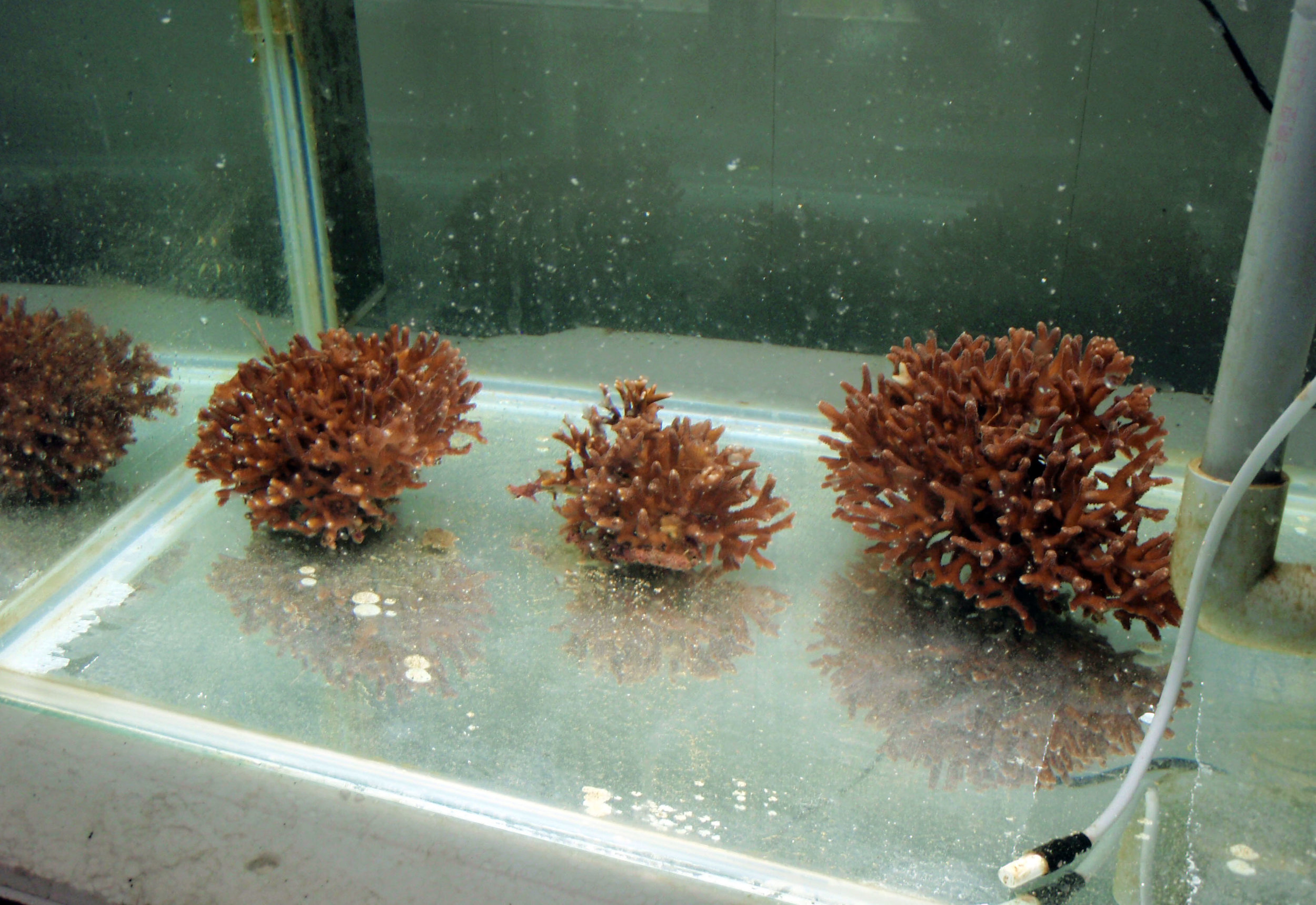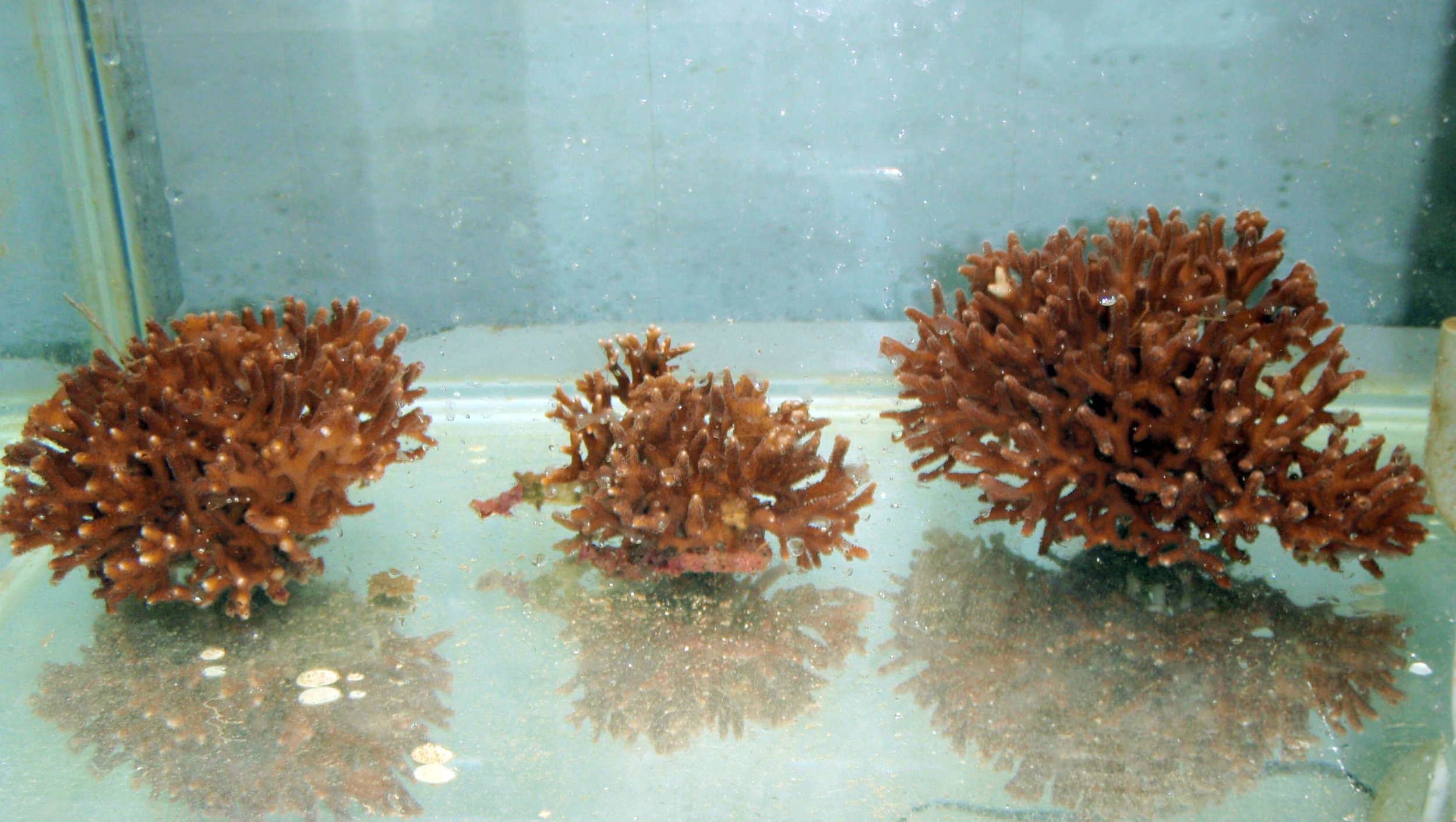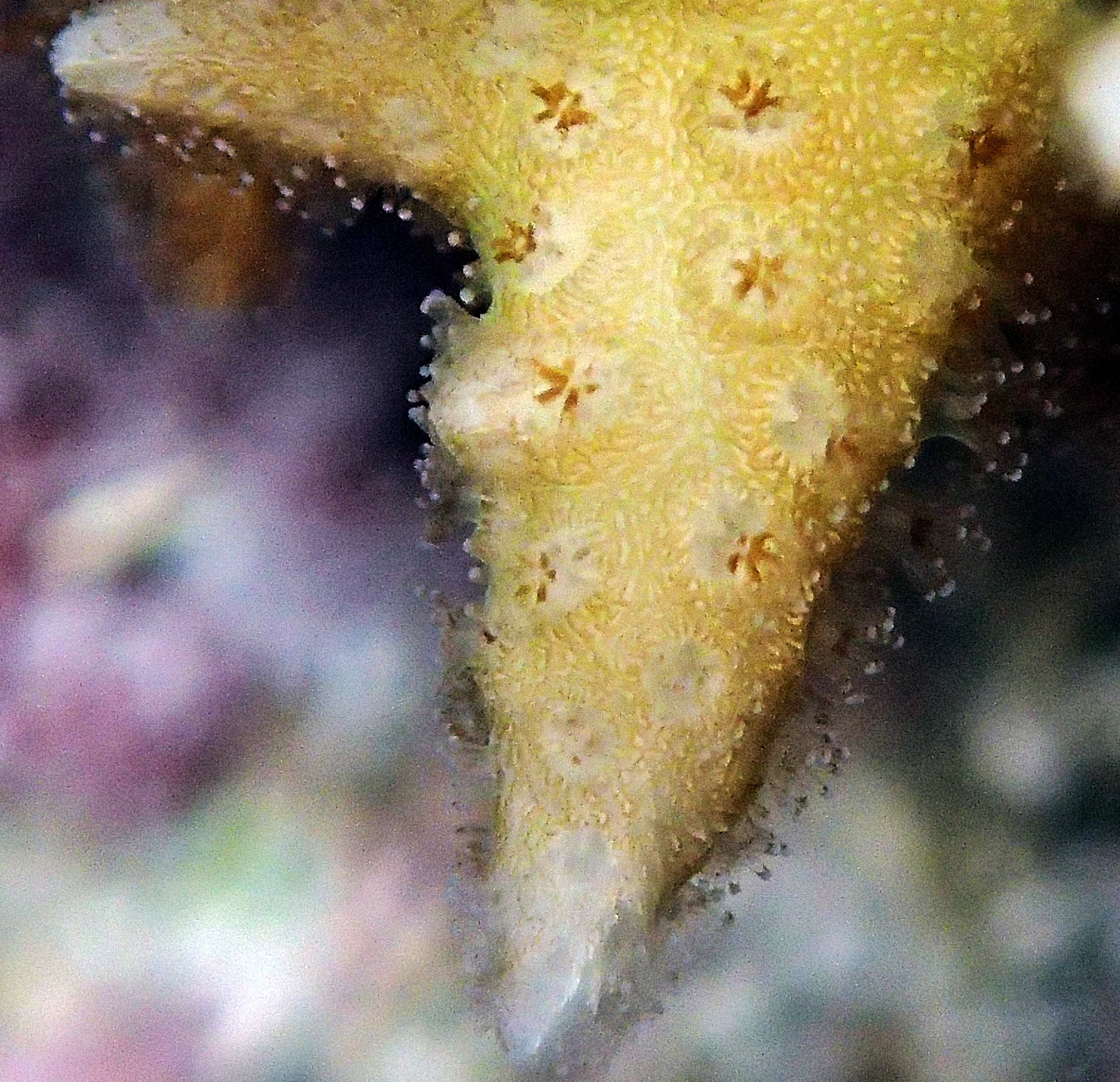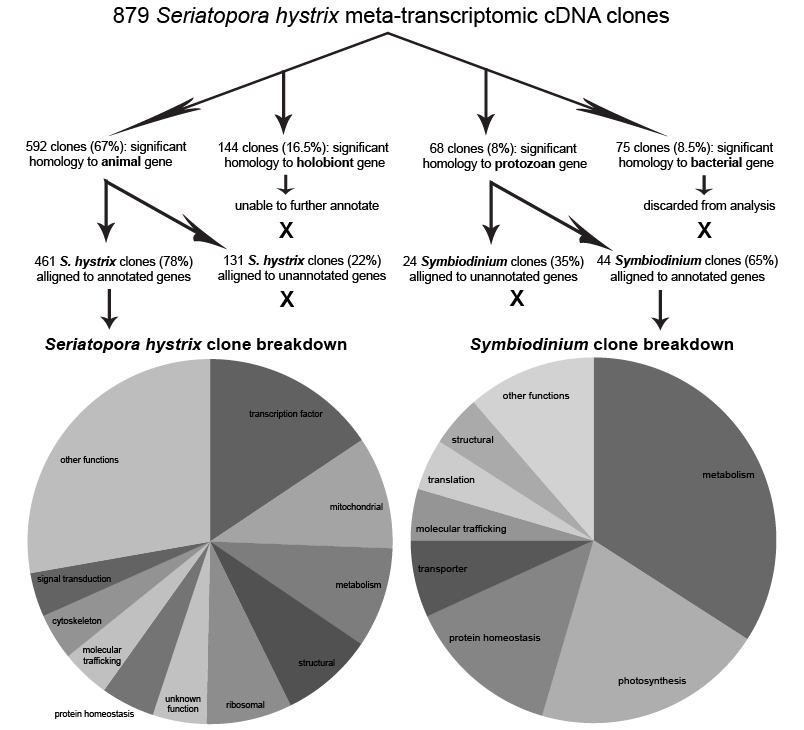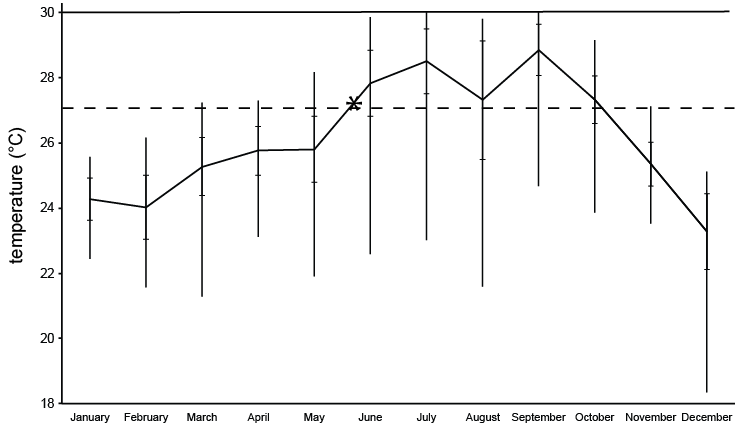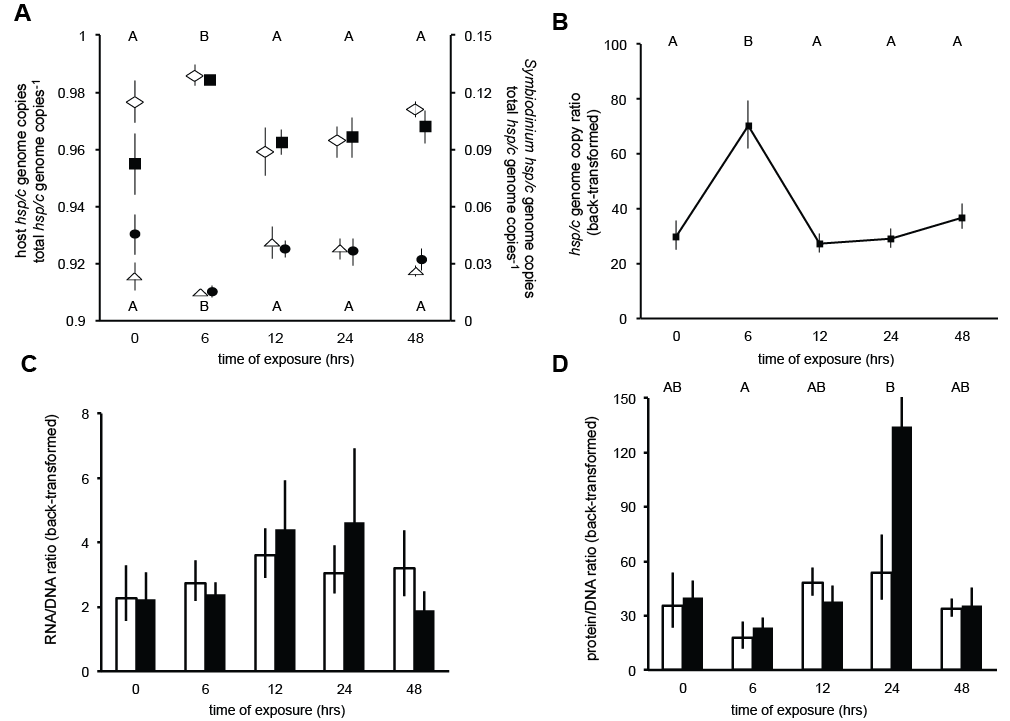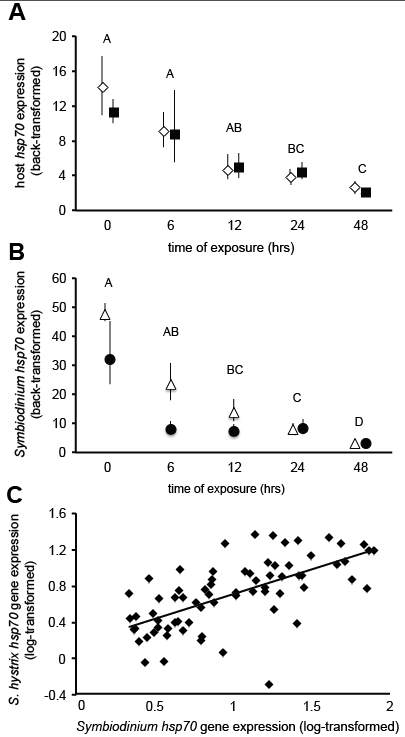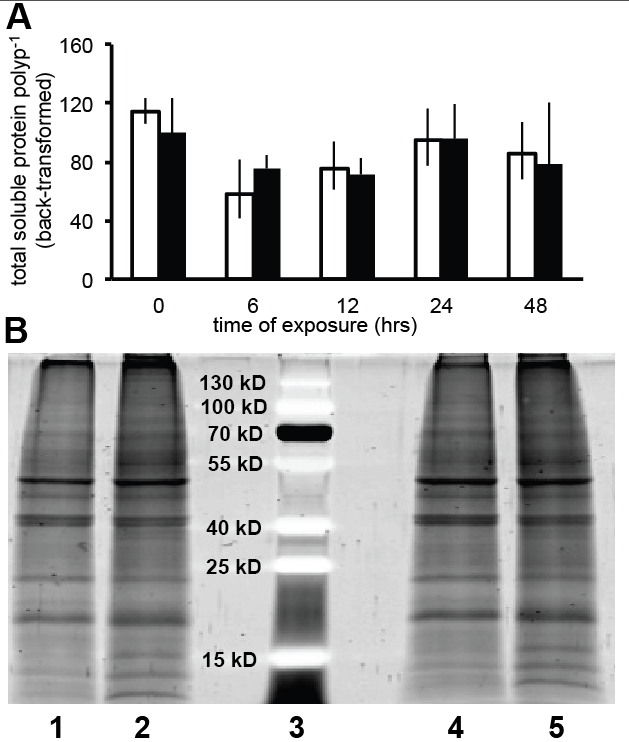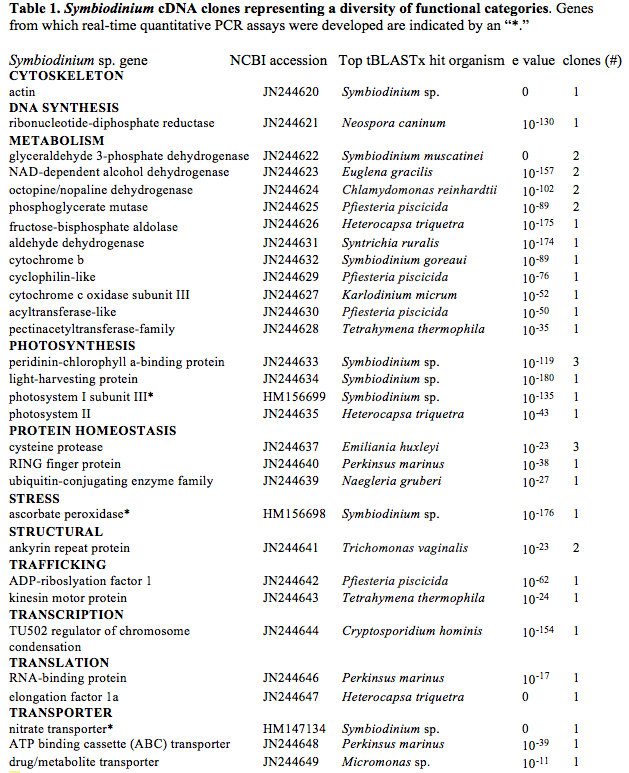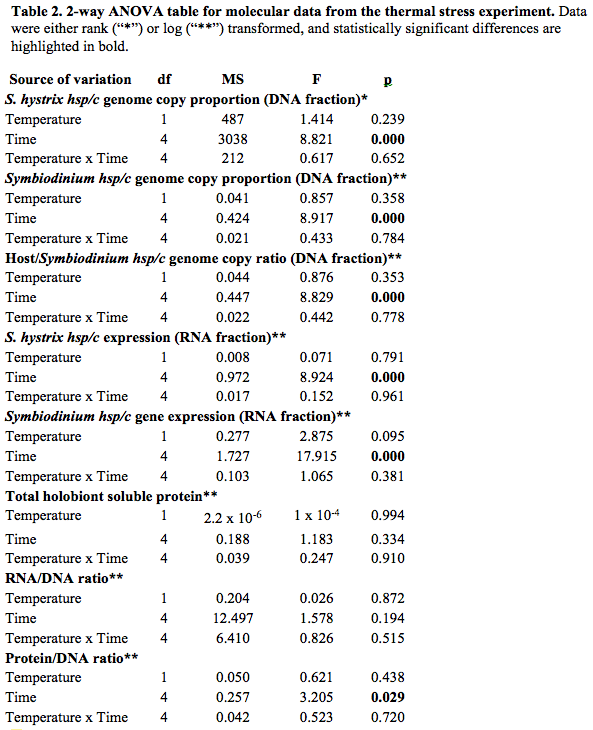In the "Seriatopora hystrix" short-term temperature experiment" (SHSTTE), whole S. hystrix colonies from Southern Taiwan were exposed to either control (27°C) or high (30°C) temperature for 48 hr, with sampling conducted after 0, 6, 12, 24, and 48 hr.
Briefly, all corals survived this experiment, and none bleached. Furthermore, there was no mRNA-level heat shock response, nor did expression of many genes changes. Readers are referred to Mayfield et al. (2011, PLoS ONE) and Mayfield et al. (2014, Int J Mar Sci) for details. At the present time, we are looking for funds to sequence the transcriptomes of corals scarified after 12, 24, and 48 hr to elucidate how these corals acclimated to a temperature they experience in situ for only several hours at a time over the course of a year (30°C). For all data for this experiment (excluding expressed sequence tag sequences, which can be found here), please click here for an Excel spreadsheet. Otherwise, here are JMP files for 1) in situ seawater temperatures at the site of coral collection (Houbihu) in 2009 and 2) the coral gene expression data. Please note that, in the original manuscript in PLoS ONE, a 2-way ANOVA was used (because I was a novice in statistics way back then!). The latter JMP file is now formatted for the proper analysis of fixed temperature effects over time: repeated measures ANOVA.
See bottom of page for interactive plot of Houbihu temperature data.
